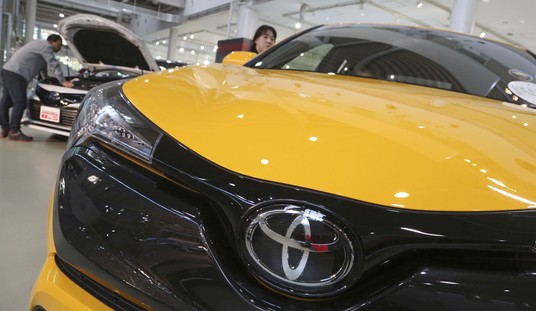Quite a few questions surround the war in Afghanistan. Should the U.S. change its approach? Would more troops help? What’s the exit strategy? Washington policymakers will spend a fair amount of time answering these queries this fall.

But there’s a bigger, longer and more expensive war that deserves scrutiny. It also requires an exit strategy: the War on Poverty.
President Lyndon Johnson launched this war in 1964. Since then it’s cost taxpayers some $15.9 trillion in constant 2008 dollars. That’s more than twice the amount ($6.4 trillion in constant 2008 dollars) our country has spent on all shooting wars, from the Revolution through Afghanistan, combined.
Total welfare spending tends to fly under the radar screen because it’s spread across so many bureaucracies. There are at least 13 government departments and agencies, 17 budget functions and 71 separate programs involved in the federal welfare state. But the whole thing is huge. Add up all the federal, state and local government spending and you’ll find aid to poor and low-income persons is the third most expensive government activity.
In 2006, welfare spending totaled almost $600 billion. That trailed only the big entitlement programs Social Security and Medicare ($878 billion) and combined government spending on education ($683 billion). American governments spend more on welfare than on defense, law enforcement and transportation.
Still, politicians often claim government doesn’t spend enough to help the poor. During last year’s campaign, for example, Barack Obama announced that, “George Bush spent the last six years slashing programs to combat poverty.” But welfare spending has vastly increased year after year, and decade after decade.
Recommended
How much? In a new report from The Heritage Foundation, welfare experts Robert Rector, Katherine Bradley and Rachel Sheffield write that, “For the past two decades, means-tested welfare or aid to the poor has been the fastest growing component of government spending, outstripping the combined growth of Medicare and Social Security spending, as well as the growth in education and defense spending.”
The charge that President Bush underfunded welfare simply doesn’t ring true. “During the eight years that President George W. Bush was in office, annual welfare spending rose in current dollars by 67 percent,” the Heritage researchers found. “After adjusting for inflation and population growth, welfare spending still rose by one-fourth under President Bush.”
All this spending would perhaps be defensible if it was providing positive results. For example, while the U.S. leads the planet in defense spending, we boast the greatest military ever assembled, and this protects our global interests.
But the ever-expanding welfare state has had a perverse effect by encouraging single parenthood and endangering the American family. “When Johnson launched the War on Poverty, 7 percent of American children were born out of wedlock,” Rector, Bradley and Sheffield found. “Today, the number is 39 percent. As husbands left the home, the need for more welfare to support single mothers increased. The War on Poverty created a destructive feedback loop: Welfare promoted the decline of marriage, which generated a need for more welfare.”
Instead of increasing spending year after year, Washington ought to work to encourage stable families. After all, roughly 80 percent of all long-term poverty is in single-parent households. A simple wedding ceremony could lift two-thirds of those families out of poverty overnight.
The Heritage report marks the first time researchers were able to add up spending by all governments (federal, state and local) on all welfare programs. Policymakers finally have a clear picture just how much the War on Poverty has cost, and how much it is projected to cost in the future.
Before we shell out another $10 trillion in the years ahead, lawmakers should consider how much our country is wasting. Total welfare spending amounts to $28,000 per year for each lower-income family of four. For that kind of money, we ought to be able to eliminate poverty, and thus end welfare completely.
Something’s seriously wrong here. It’s time for Americans to demand accountability.

























Join the conversation as a VIP Member